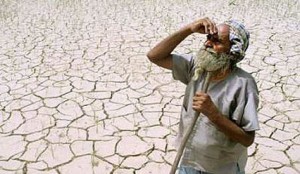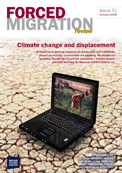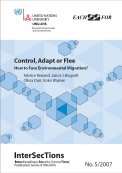 Environmental refugees, climate refugees, environmental migrants, environmentally displaced people – these are just some of the names that have been given by the general public, media, and experts alike to describe people forced to leave their homes when their livelihoods and safety are jeopardized from the sudden and creeping effects of climate change.
Environmental refugees, climate refugees, environmental migrants, environmentally displaced people – these are just some of the names that have been given by the general public, media, and experts alike to describe people forced to leave their homes when their livelihoods and safety are jeopardized from the sudden and creeping effects of climate change.
Let’s take a closer look at the most widely used term “climate refugee”. If you ask a person at random what a refugee is, then they will probably tell you it’s someone who is forced to leave their home for severe circumstances out of their control. It may conjure up sympathetic images in their mind of people who are “on the move” or confined to displacement camps with limited basic resources. It is a well-known term, with unique rights of sanctuary attached to it.
The term “climate refugee” can be viewed under the broader term of “environmental refugee”. Generally, it is accepted that the term “environmental refugee” was coined by El-Hinnawi in a UN Environmental Programme report way back in 1985. However to this day, using the term “refugee” remains to be controversial in the field, fueling an ongoing debate. Many advocates argue that the term “climate refugee” creates a sense of urgency and global responsibility, and not using the term would downplay the seriousness of the issue at hand. At the same time, others view the term as highly simplistic and claim it does not distinguish between people who have or have not crossed an international border, or who may be migrating due to other push factors such as economic and political reasons.
In actuality, it is legally incorrect, as the term “refugee” is laid out in the 1951 United Nations Convention Relating to the Status of Refugees. Within the Convention, it states that a “refugee” is defined as:
“A person who owing to a well-founded fear of being persecuted for reasons of race, religion, nationality, membership of a particular social group, or political opinion, is outside the country of their nationality, and is unable to or, owing to such fear, is unwilling to avail him/herself of the protection of that country.”
As you can see by this very clear-cut definition, nowhere in this does it cover environmental reasons for displacement. This is what many experts in the field are pushing towards. They argue that the 1951 Convention is dangerously looking out of date, and is no longer relevant to the world we now live in. It needs to be modified or expanded to include reasons of “environmental persecution”, so that vulnerable populations can receive the same standard of international protection as conventional refugees.
The UN High Commissioner for Refugees (UNHCR) has repeatedly rejected the notion of “climate refugees”, stating in one report that, “Lumping both groups together under the same heading would further cloud the issues and could undermine efforts to help and protect either group and to address the root causes of either type of displacement.”
Although less widely used, the term “environmental migrant” is a more neutral one, and is often used as a working definition by current UN sponsored research projects and larger migration INGOs such as the International Organization of Migration (IOM). The term still advocates for protection of those who are displaced by environmental change, while at the same time remaining consistent with the Refugee Convention and the practice of the UN. This blog has chosen to use “environmental migrant” throughout the site. To read why click here.
No matter the term used to describe this vulnerable classification of people, immediate action needs to be taken by the world to address the humanitarian response to the devestating effects of climate change. However, it is apparent that certain obligations need to be formalized before any large policy implementation is to be taken by the UN, donor agencies, and governments. A commonly accepted definition is one of the crucial starting points in addressing the needs of people who are displaced by ever increasing climate change factors.
Article by Dan DaSilva



